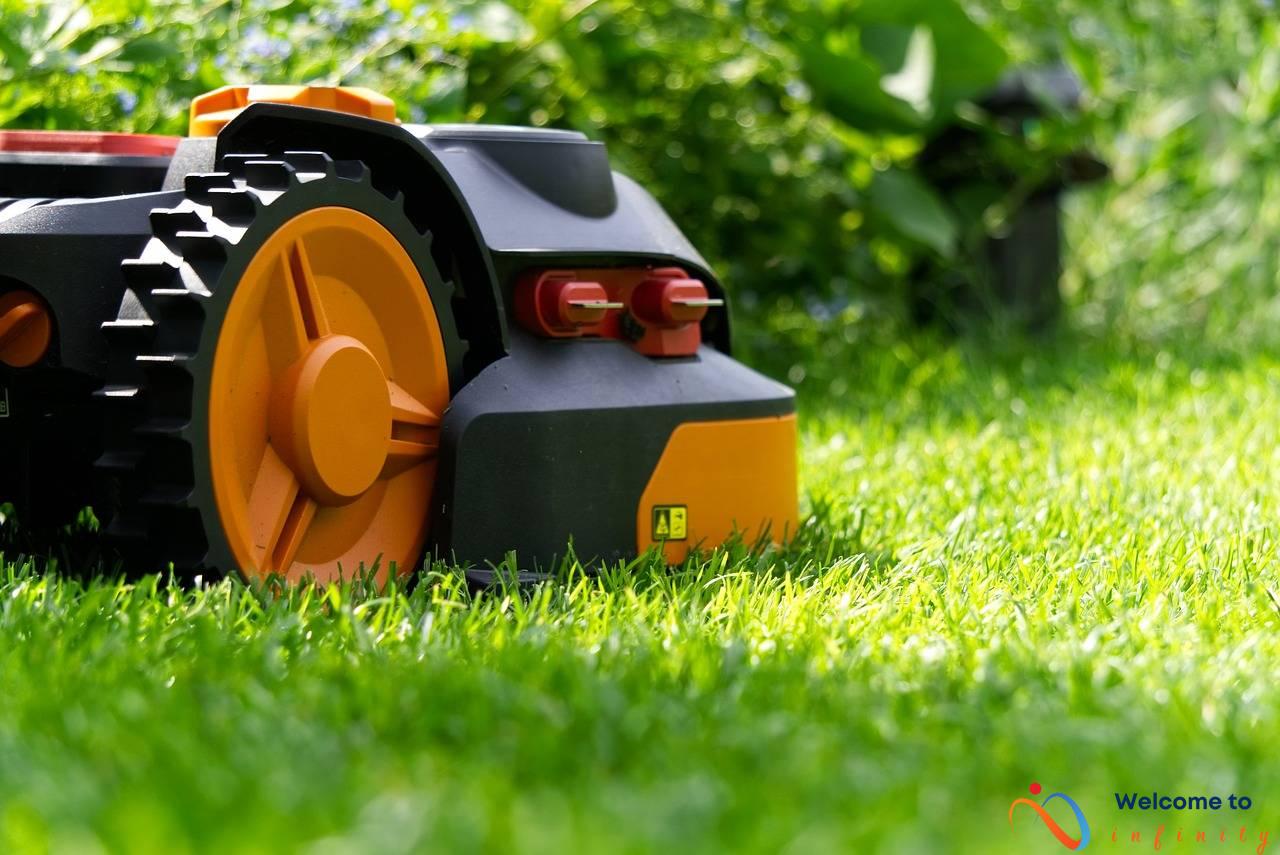The aviation industry has always been at the forefront of technological advancements. With the incorporation of AI, airlines are now capable of making data-driven decisions that lead to improved safety, fuel savings, and reduced carbon emissions.
One of the major benefits of AI in aviation is predictive maintenance. By analyzing data from sensors, AI algorithms can predict when components need repairs, reducing unscheduled maintenance and costly downtime. Additionally, automated cockpit assistance powered by AI can assist pilots during takeoff, landing, and in-flight maneuvering, reducing pilot workload and improving precision while minimizing the risk of human error.
AI can also be leveraged to manage air traffic autonomously. This enables airlines to optimize flight routes, reduce the risk of accidents, and save fuel. Furthermore, visualizing data in real-time through augmented reality and wearables can aid pilots in making informed decisions while in-flight. AI-powered air traffic analytics can also help air traffic controllers recognize and address air traffic issues earlier, reducing flight delay times.
AI has also given rise to a more personalized and improved customer experience in aviation. Through AI-powered in-flight entertainment, travelers can now benefit from a seamless, personalized experience that caters to their preferences. Additionally, chatbots powered by AI are being used for fast and efficient customer service, assisting customers with booking flights, checking-in, and providing on-the-fly flight updates.
The future of aviation is set to be even more advanced with AI. Autonomous electric aircraft, which are more fuel-efficient and environmentally friendly, can be developed with the help of AI. AI can also help reduce the operating costs for supersonic travel, making it more accessible to the masses while maintaining safety and sustainability.
AI-Powered Predictive Maintenance
AI-powered predictive maintenance is a game-changer for the aviation industry. By leveraging AI algorithms to analyze data from various sensors installed in the aircraft, airlines can predict when a component needs repairs, reducing unscheduled maintenance and costly downtime.
Traditionally, airlines relied on scheduled maintenance checks, which were labor-intensive, time-consuming, and often led to unnecessary repairs or replacements. With AI-powered predictive maintenance, the airline industry can optimize their aircraft maintenance, enhancing their safety, efficiency, and resulting in cost savings.
- AI analyses data from various sensors and tracks the performance of each component
- It flags components that require maintenance, reducing the risk of unexpected failures and unscheduled maintenance
- It provides early warnings on parts that need replacement, reducing the risk of costly downtime and potential safety hazards
In addition to reducing maintenance costs, AI-powered predictive maintenance also reduces the carbon footprint of the airline industry. By keeping the aircraft in optimal condition, airlines can save fuel by reducing unnecessary weight, enhance aerodynamics, and reduce emissions resulting from inefficient operations.
The implementation of AI for predictive maintenance is not only limited to the aircraft but also extends to ground handling. By examining data from various sensors and analyzing the movements of ground equipment, airlines can optimize the use of ground handling equipment, predicting when malfunctions can occur, and preventing vehicle breakdowns that can delay flights and cause operational disruptions.
| Benefits of AI-powered predictive maintenance |
|---|
| Reduced maintenance costs |
| Minimized downtime and delays |
| Lowered risk of safety hazards |
| Savings in fuel and emissions |
| Optimization of ground handling equipment |
AI-powered predictive maintenance is a revolutionary development for the aviation industry. It enhances the safety, efficiency, and sustainability of the industry, creating a smoother and more reliable flying experience for passengers.
Automated Cockpit Assistance
The incorporation of AI in aviation has brought numerous benefits to the industry, including enhanced safety and efficiency in the skies. One significant application of AI in aviation is automated cockpit assistance, which reduces the workload on pilots and minimizes human error.
AI algorithms assist pilots during takeoff, landing, and in-flight maneuvering by analyzing data from sensors and providing real-time feedback. This feedback improves precision and reduces the risk of error, ultimately leading to safer and more efficient flights.
Furthermore, automated cockpit assistance reduces pilot workload by automating some processes that were previously done manually, freeing up the pilot's time to focus on other critical tasks. This automation also leads to reduced fatigue levels among pilots, making it easier for them to stay alert and focused during long flights.
To facilitate automated cockpit assistance, airlines are equipping their planes with advanced sensors and software that allow them to communicate with the plane's systems and provide real-time feedback to pilots. This technology has greatly improved the safety and efficiency of flights, and as AI continues to evolve, it is expected that this trend will continue.
Autonomous Flight Operations
Autonomous flight operations have been made possible by the incorporation of AI in aviation. By leveraging AI to autonomously manage air traffic, airlines can optimize flight routes, reducing flight times and fuel consumption. Moreover, autonomous flight management systems enable airlines to minimize the risk of accidents by avoiding potential collisions and providing pilots with real-time alerts.
AI provides airlines with predictive analytics that helps them anticipate weather patterns and adjust flight paths accordingly. For instance, if a storm is likely to hit a particular area, AI-powered systems can alert the pilot of potential dangers and suggest an alternative route. AI can also be used to optimize the flight path by considering wind conditions and weather patterns, which can reduce overall flight time and fuel consumption.
To maximize efficiency, AI-powered systems can automate many of the manual processes that pilots and flight dispatchers engage in, including flight planning, adjusting for weather conditions, altering schedules, and re-routing flights. In addition, by enabling real-time communication between pilots and dispatchers, AI can help airlines respond to unplanned events, such as air traffic congestion, flight delays, or cancellations.
By reducing fuel consumption and optimizing flight routes, AI-powered autonomous flight operations can significantly reduce carbon emissions and make air travel more sustainable. It can help airlines minimize their impact on the environment by reducing overall fuel consumption and reducing flight times. As air travel continues to grow globally, AI-powered flight systems are expected to play an increasingly vital role in improving flight efficiency, safety, and sustainability.
Augmented Reality and Wearables
Augmented reality (AR) is a technology that adds digital elements to a real-world view. In aviation, AR can be used to superimpose critical flight information right in front of the pilots. Wearables like smart glasses and head-mounted displays can be used to access important flight information and augmented reality displays in a hands-free way.
AR technology can provide pilots with real-time updates, warnings, and instructions while on the flight deck, which can help them make more informed decisions. For example, in case of low visibility, AR can help pilots navigate the runway and taxiways by providing a clear view of the surrounding areas with the help of GPS and camera sensors.
With AR technology, pilots can see critical flight information, such as altitude, speed, and direction, right in front of their eyes, without looking at the instrument panel. This can help them keep their eyes on the runway and surroundings, and make quick decisions in case of any emergency situations. Additionally, it can help to reduce pilot workload and increase situational awareness, leading to safer and more efficient flights.
In conclusion, AR technology and wearables have the potential to revolutionize the aviation industry by improving the way pilots access critical flight data and make decisions while in-flight. By using real-time data and visualizations, pilots can fly with greater confidence, accuracy, and safety.
Air Traffic Analytics
The integration of AI-powered air traffic analytics in aviation is revolutionizing the way air traffic controllers manage air traffic. With the ability to analyze vast volumes of data in real-time, AI algorithms can identify traffic congestion and address potential issues before they escalate, reducing flight delay times and improving the efficiency of air travel.
AI-powered air traffic analytics work by collecting and analyzing data from various sources, such as flight plans, radar data, and weather reports. By combining this data with machine learning models, AI algorithms can provide air traffic controllers with real-time insights into potential congestion, enabling them to reroute flights, adjust speeds and altitudes, and manage traffic flow efficiently.
Additionally, AI-powered air traffic analytics can help identify patterns in flight data, enabling airlines to optimize flight schedules and plan for future travel demands. By understanding flight patterns, airlines can allocate resources more efficiently, reducing fuel consumption and air traffic congestion.
In summary, AI-powered air traffic analytics is a game-changer in the aviation industry, enabling airlines to manage air traffic more effectively and improve the overall customer experience while reducing delays and saving fuel.
AI-Enabled Customer Experience
The use of AI in the aviation industry is greatly benefiting the customer experience. From personalized in-flight entertainment to chatbot-based customer service, AI technology is making air travel more convenient and enjoyable.
AI-powered in-flight entertainment systems provide personalized recommendations based on a traveler's preferences. This technology enables the airline to offer tailored recommendations for TV shows, movies, music, podcasts, and audiobooks. With personalized entertainment options, the traveler can have a seamless and enjoyable journey.
Moreover, chatbots powered by AI are widely used to provide efficient and personalized customer service. Chatbots are equipped to handle simple queries and provide quick responses for booking flights, checking-in, and providing on-the-fly flight updates. This technology improves customer experience by providing 24/7 assistance and minimizing wait times.
In conclusion, by harnessing the power of AI, airlines can offer an enhanced customer experience, making air travel more convenient, efficient, and enjoyable.
Personalized In-flight Experiences
In-flight entertainment has come a long way since the days of shared screens and limited options. With the integration of AI, airlines are now able to offer personalized entertainment options that cater to individual preferences. AI algorithms analyze passenger data, such as previous entertainment choices and travel history, to suggest movies, TV shows, and music tailored to individual preferences.
In some cases, airlines even offer virtual and augmented reality experiences that allow passengers to explore other cities or interact with immersive content during the flight. The incorporation of wearable technology can also allow for a seamless and personalized experience, such as syncing the in-flight entertainment to a passenger's smartwatch.
Furthermore, AI can also help improve the accessibility of in-flight entertainment for passengers with disabilities. For example, AI-powered closed captioning and audio descriptions can help make movies and TV shows accessible for passengers with hearing or visual impairments. This technology can be a game-changer for passengers with disabilities, allowing them to enjoy the same entertainment options as their fellow travelers.
Overall, AI-powered in-flight entertainment offers a personalized and seamless experience that enhances the overall travel experience for passengers. By analyzing passenger data and offering tailored options, airlines can provide a unique and enjoyable in-flight experience that stands out from the competition.
Efficient and Personalized Customer Service
One of the most significant impacts of AI on the aviation industry is the ability to enhance customer service. Today, airlines are leveraging chatbots powered by AI to assist customers with their flight-related queries from booking flights, check-ins, to providing on-the-fly flight updates. The chatbots' ability to instantly provide accurate responses is making customer service faster, more efficient, and reliable.
The chatbots can understand natural language, making communication with customers effortless and comfortable. Customers can ask their queries in their natural language, and the chatbots can instantly respond accurately. This level of personalized customer service is taking the aviation industry to new heights, as airlines are striving to provide a comfortable, relaxing, and stress-free experience to their customers.
The use of AI-powered chatbots is providing customers with a fast, reliable, and straightforward option to book their flights, which reduces the waiting time for customers. Furthermore, the chatbots can also provide assistance during check-ins and aid in resolving flight-related issues, making the entire process hassle-free and less time-consuming for customers.
Moreover, airlines can use chatbots to collect valuable customer feedback, complaints, and suggestions, which can significantly benefit the airlines in the long run. This can help airlines make data-driven decisions to improve their services, which eventually leads to happy and satisfied customers.
Airline companies worldwide are leveraging chatbots powered by AI to enhance their customer services, making it reliable, personalized, and efficient. The use of chatbots provides an excellent opportunity to the aviation industry to transform the customer experience positively.
Futuristic Developments in Aviation
AI is not only enhancing the present aviation industry but also shaping its future. Innovation in autonomous electric aircraft and supersonic travel is underway. AI will be crucial in accelerating these advancements and ensuring that they meet the requirements of safety and sustainability.
Autonomous electric aircraft, a game-changer for the aviation industry, are under development. The technology leverages AI to facilitate the engineering of electrical propulsion systems, enabling aircraft to be more fuel-efficient and environmentally friendly. These aircraft will be operated autonomously, without pilots, which would eliminate the need for onboard crew requirements and cut costs.
Supersonic travel presents an exciting prospect, reducing travel time by up to 70%. The cost of supersonic travel has been prohibitive in the past, but AI can help reduce operating costs. AI algorithms can be employed to ensure safe, fast, and fuel-efficient travel. AI can also help design aircraft that generate less noise pollution and carbon emissions, improving the sustainability of supersonic travel.
AI will continue to revolutionize the aviation industry in the years to come, fostering improvements that will positively impact our lives. As AI pushes the boundaries of innovation and possibility, we move closer to a sustainable and efficient aviation industry.
Autonomous Electric Aircraft
With the help of AI, the aviation industry is setting sights on the development of autonomous electric aircraft. Not only are they expected to be more fuel-efficient, but they are also better for the environment. These aircraft are powered by electricity and have electric motors that drive the propellers, eliminating the need for traditional jet engines that are powered by fossil fuels. This makes electric aircraft a promising alternative to conventional planes, cutting down emissions and reducing carbon footprint.
AI can greatly aid in the development of autonomous electric aircraft by analyzing vast amounts of data and calculating how to optimize flight paths and minimize energy consumption. Additionally, AI can be used to monitor and manage multiple automated systems within the aircraft, ensuring smooth and safe operation.
Autonomous electric aircraft are also expected to be quieter and generate less noise pollution compared to their conventional counterparts, as electric motors and propellers produce less noise than traditional jet engines.
- Electric aircraft are expected to fly shorter distances and are expected to be operated for short flights in the initial phases.
- Rolls-Royce, Airbus, and other big names in the aviation industry have announced projects related to electric aircraft that are set to take the skies in the near future, and AI will play a crucial role in making it happen.
In conclusion, AI is set to enhance and transform the aviation industry, and autonomous electric aircraft are just one of the many futuristic developments powered by AI. As technology continues to advance, we can expect more innovative solutions to make air travel more efficient, safer, and environmentally friendly.
Supersonic Travel
Supersonic travel is the next frontier in air travel, promising to reduce air travel times dramatically and increase efficiency. While currently limited to military and research applications, commercial supersonic planes are expected to make a comeback soon. However, the high operating costs and sonic boom pollution have hindered the widespread adoption of supersonic planes. But, with the help of AI, the aviation industry is on the brink of a revolution.
AI can help reduce the operating costs of supersonic travel by optimizing flight paths and fuel usage, enabling airlines to fly faster and farther with less fuel. Additionally, AI can assist with maintenance and repair, ensuring that supersonic planes are operating at optimal efficiency at all times.
Safety and sustainability are also critical concerns when it comes to supersonic travel. AI can help ensure that supersonic planes operate within the safety parameters, while also reducing the environmental impact of supersonic planes. By optimizing flight paths, reducing fuel usage and increasing efficiency, AI can make supersonic travel affordable and accessible to the masses without compromising safety and sustainability.











